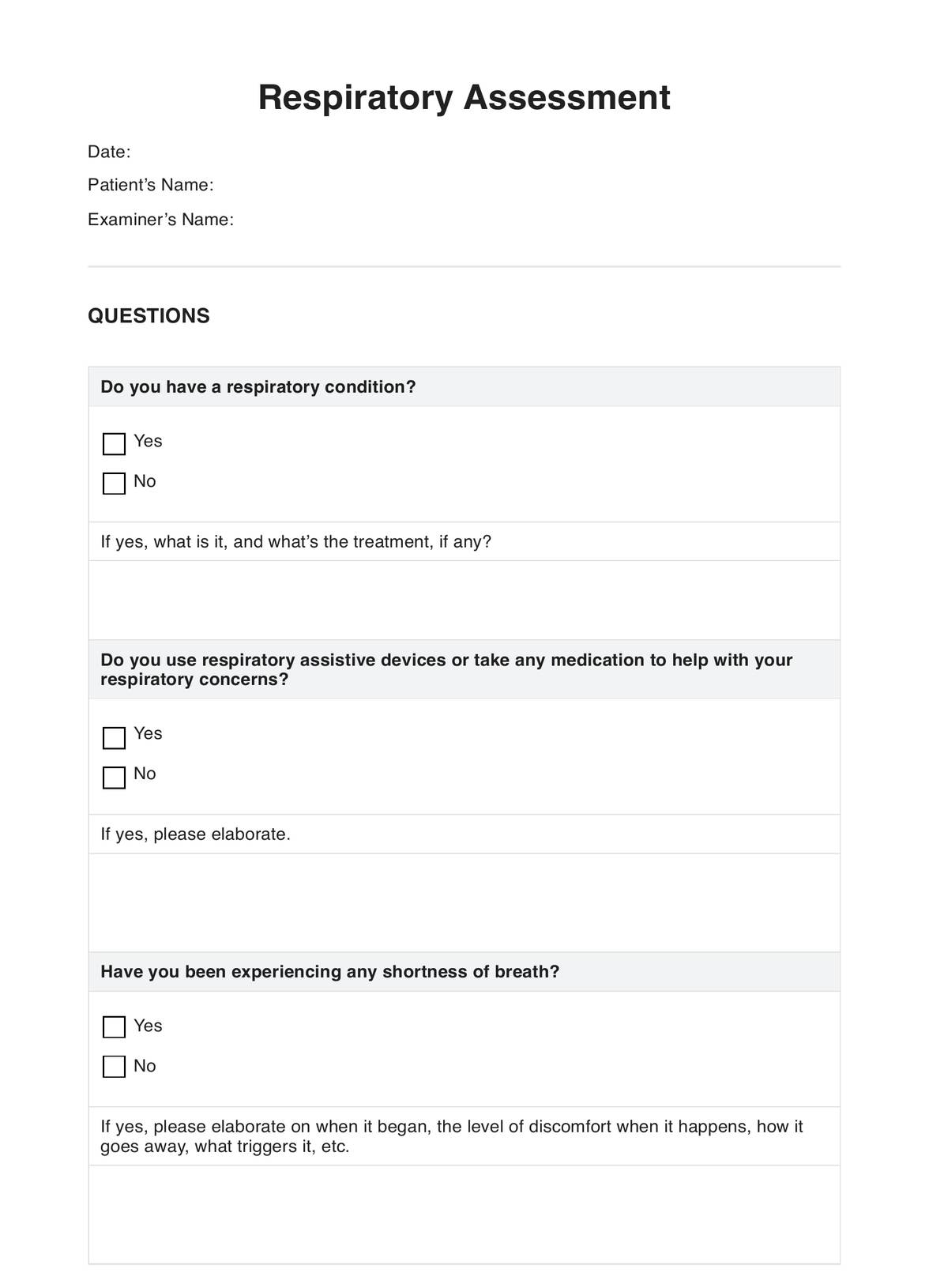Nurses and pulmonologists are most like to use and benefit from our respiratory assessment template.

Respiratory Assessment
Detect any respiratory problems before they escalate into emergencies. Conduct the assessment and record your results on our respiratory assessment template.
Use Template
Respiratory Assessment Template
Commonly asked questions
You can use the respiratory assessment template while conducting a head-to-toe assessment on your patient or checking your in-patient recovering from surgery, medication, etc.
How you use it is dependent on you. You can use it as a guide, reference, or document to record your results.
EHR and practice management software
Get started for free
*No credit card required
Free
$0/usd
Unlimited clients
Telehealth
1GB of storage
Client portal text
Automated billing and online payments











